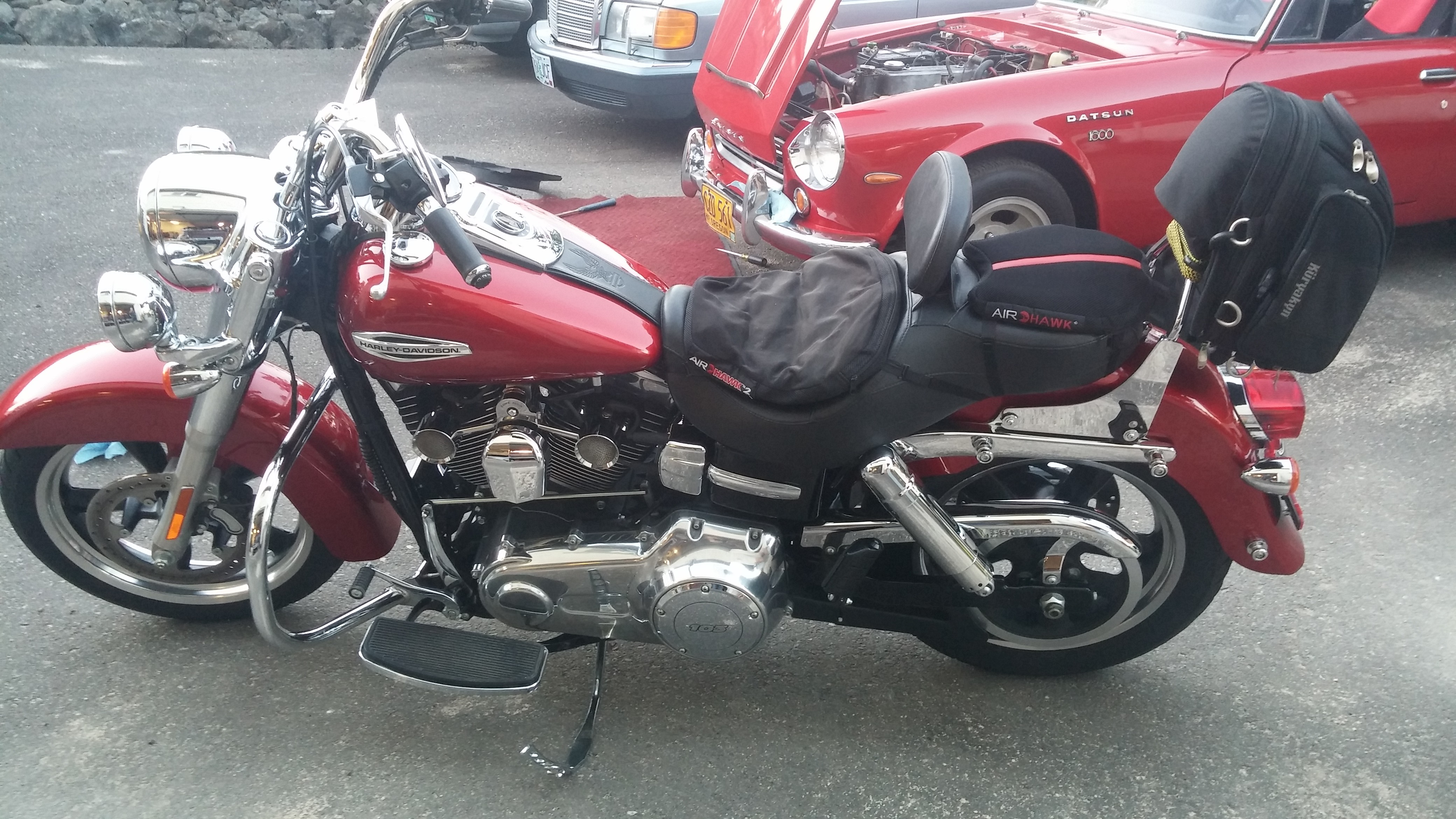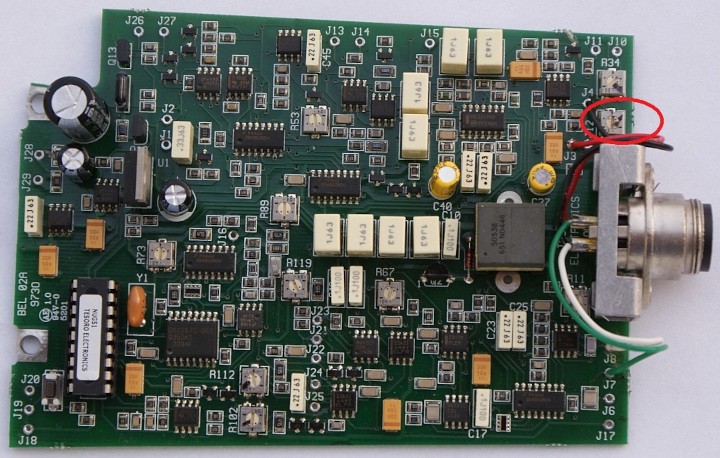-
Posts
283 -
Joined
-
Last visited
Content Type
Forums
Detector Prospector Home
Detector Database
Downloads
Posts posted by rled2005
-
-
1 hour ago, GotAU? said:
It’s all relative, we’re 3 hours from good areas in the desert.
Curious - Have you been out to the Steens Mtn area? I was trying to find some prospects there (for quartz crystals) but had to leave as we were chased out by lightning and heavy rains. Heard anything about mineral collecting that way?
Been awhile since I’ve gone that. I went elk hunting out there when I lived in Bend, O
-
23 minutes ago, GotAU? said:
Ah, then you have some great rivers and mountains nearby!
60 miles one way or the other for areas of mining.
-
2 hours ago, GotAU? said:
If you live in a Northern climate near mountains and streams, Reese’s book “The Nugget Shooter’s Field Guide” would be a good one to accompany Chris Ralph’s “ Fists Full of Gold”.
Southwest Oregon
-
My son asked me what book to get that explains the geology and geological indicators to find gold sources? So, I said that I would get some suggestions from the seasoned gold hunters on Detector Prospector, instead of searching the internet where you will find that one person states that his book is the best, ... and, etc., etc. (My experience is somewhat limited, far from pro.)
-
Nice looking conversion. I just weighed my ATX coil and shafts, they weigh 4lbs alone.
Seems like it would be a costly expense to shave 1.5 lbs.
-
Has anyone ever tried to put a carbon fiber shaft on the Garrett ATX?
-
Has anyone had an issue with the coil bolt end coming off? Where would I get a new coil bolt?
-
On 5/26/2022 at 8:28 AM, Gerry in Idaho said:
With the 1st big weekend of the year coming, many new eager Nugget Hunters are wanting to get out in the field. Some of you don’t have a seasoned Nugget Hunting friend to help you learn the ropes. Since my Field Staff and I offer detector training, we see the many mistakes some folks make. I’ll try to give some Field Knowledge and info to possibly help make your adventures more golden. Anyone who has good advice, please chime in.
These are some of the items I recommend. I’ll mention detector technology type afterwards as my staff/I use different tools for the varying machines.
Knee Pads - If running VLF detector, Knee pads and preferably ones with no metal. I’m at the point now that I personally don’t use them because I have pants that were designed to hold knee pads. I have Duluth brand but now there are many and including Military BDU pants with knee pad sleeves built into the knees.
Footwear - Non Metal Boots or Hiking Shoes. This is especially needed if you swing a bigger powerful type detector (GPZ-7000, GPX-5000 or below). The new GPX-6000 is not as bad and some regular boots/shoes are OK, but you’ll learn how to walk without getting the feet to close. As for my preference of footwear, I have Danner Slip on non metal boots and Merrell Hikers.
Magnet - Strong Rare Earth Super Magnet. This little tool is so important in fast recovery and or identification of targets. Many folks have no clue why we want a good strong magnet. I myself keep the magnet on my metal pick at all times.
Non Metal Recovery Tool - Non metal Nugget Cup or Trowel/Scoop. If you swing VLF and trying to get the tiny dinks, I prefer the nugget cup. If looking for bigger gold or using bigger machines, the scoop/trowel is fine. Caution – You can’t use your bare hand on a VLF as the detector will respond to the minerals in your hand.
Jewelry/Metal - Remove your rings and leave them home. If you wear a watch, get one with a non metal band or don’t wear one on the arm you use to swing the scoop across the coil.
Pick - I like APEX brand as I get the rare earth super magnet on it and they come in different sizes/models. I’m a bit over 6’ tall so I prefer a little longer of a pick. 24”/30” are ideal for taller folks and especially if you run a deeper big machine. 18” handle is ideal for most folks swinging a VLF type detector and or if you prefer to carry the pick on your hip. Realize 24” handle length is hard to have on your hip as it gets caught up in your legs when walking. I wear the 24/30” picks on my back.
Harness - I like the Doc’s Ultra Swingy Thingy and use it with all my Prospecting detectors. Not only does it allow me to carry my pick on back, but it has a bungee to help with the weight of your detector. As a bonus, it holds up my pants so I don’t get burnt on the plumber crack. Seems older guys pants don’t hold up as well as when we were younger.
Trash Pouch - You’ll dig more trash than treasure so do your part and pack it out. No use in finding all those bullets and foil over/over and over each trip.
Nugget Holder - Yes you should keep one on you at all times. I prefer plastic pill bottle, film container or scrotum pouch. Not a fan of glass vial as they can easily break. Also the glass will dull the gold.
Swing Arm - There are a variety out there and the one off my GPZ-7000 goes with me at all times for many different detectors. The swing arm allows much better coil control and longer detecting hours with less fatigue. The SDC-2300 is a prime example of a detector that should have a swing arm. Same with GPZ-7000. Heck, even my Equinox with a larger coil is much easier and better to use when using a swing arm.
Test Target - I like to use the size of test target for the expected size of gold I plan on finding at a particular site. Get a small #8 lead bird shot and tap it with a hammer to give a little flatness. Glue it to a plastic poker chip. If you are hunting in areas with bigger gold, then have said like size test pieces to bury and listen/tune the detector.
Coils- If running VLF detectors I recommend you get the smallest coil possible for that detector for most areas. The smaller coil actually goes deeper and gives a cleaner signal response to small gold than the stock coil. There’s more smaller nuggets out there than bigger gold so keep the odds in your favor. If hunting for larger gold with VLF, the stock coil or even a larger coil is preferred. Don’t think you’ll get the depth of a PI with a bigger coil on your VLF in most gold type soils. PI’s rule the depth on larger gold. In tailing piles I actually prefer a VLF with good discrimination while running stock coil or even bigger coil. Todays newer PI and DVT detectors don’t have Iron ID, but hopefully things will soon change (come on Minelab – you can do it). If using PI or DVT, use the coil size for the terrain you are in. Yes there’s always exceptions.
Spare Battery - Always have a Back Up Battery, always.
Headphones - I highly recommend them for most areas I detect. Wind is a killer on deeper weaker and or smaller nugget sounds. Good headphones allows you to hear the detector much better.
Location - For a beginner, don’t expect to find gold in unknown areas. Go where nuggets have been found with a detector. Never leave gold to find gold. As your nugget hunting skill progresses, then you can Prospect for new areas and ground.
Spare Tire - Always keep one that holds air. Know where the jack is and how to use it. A few newer type trucks have a key that drops the spare. Know where the key is, know how to use the jack/change a spare.
Phone - If swinging a bigger machine, your cell phone will give EMI to your detector. Try to keep it in the OFF position if possible.
1st Nugget - Take as many pictures as possible and soak in the moment. There is only 1 first and you want to remember forever.
DP - Share your hunt experience with the rest of us here on Detector Prospector. As mentioned in a previous post, some of us Old Guard are fading away and we need some new young guns to keep the powder burning.
Again, These tips/knowledge is just from my standpoint and always have exceptions. If something mentioned in this post gives you a better chance to find some gold and share a smile, then we are all winners. I look forward to reading from others who have tips for the newbies so chime in.
In addition, I bought a pair of snake gaiters.
-
11 hours ago, Cascade Steven said:
rled2005: I am glad that you asked about gold scales. I too have been pondering this question and considering posing such a question. About 2 years ago I purchased a gold scales on the recommendation of a blogger and have been disappointed with it. The repeatability and sensitivity are not as I had hoped. Steve H. brought up some good points so I decided to investigate reloading scales. The Frankford Arsenal Scales appears to be the most sensitive of the intermediate price range scales. Although there may be higher priced and more sensitive reloading scales, a quick Google search did not reveal them to me. The Frankford web site listed the scale accuracy at 0.1 grains accuracy. I am currently working in an area with fine gold so a more sensitive scale is an advantage to me. This detail allows me to better calibrate my metal detectors and also aid in a gold related research project. I was unaware of the Frankford scales so thank you for bringing it to my attention. And I decided to "bite the bullet" and ordered one from Amazon. Thanks again for this thread.
I ended up buying this one. It is rechargeable. Also, I didn't want one more sensitive than this because I have other needs for the scale besides fine gold.
AmazonSmile: Triton T3R Rechargeable Scale 500g x .01g : Office Products
Also, It fits in my pocket, and no worries about shelf space.
-
-
I saw one local for 400. Looks heavy. Just wondering!
There’s also a GP3000 and A GP Extreme, both for $1100. Can’t really find values on them.
-
Is there much value to Minelab's SD2000 any longer?
-
2 hours ago, Geotech said:
If you mean J20, it's right next to the micro which means it is probably used to set the micro in a particular mode or state for factory cal.
Thank you. That was my suspicions.
-
27 minutes ago, Lobo Exp said:
For sure on that! A schematic would be a life saver. I could draw one up but it would take a fair bit of time to do it. I just don't have one to reverse engineer. Trouble is with the ST is what I have seen as at current here in the photo posted, they are SMD which makes it tougher to do. I have attempted to track down this info myself and spent a good amount of time to come up with NOTHING yet. Someone has to have this info but finding out who is the deal and it would probably require a subscription fee to access that info. I used to have that kind of access years ago when I was doing repair work on electronics, I gave that up because a lot of the time it cost more to fix stuff then it did to replace it. The ST has a bunch of additional circuitry for the auto track which has made it much more complicated, and the parts are much smaller too, things are a lot more crowded on the board.
I tried their facebook page, hoping someone still comes back to it once in awhile.
-
43 minutes ago, Rick N. MI said:
Did it help you any? I wish I still had my Lobo ST.
Not sure if I'll be making any adjustments at this time. Good to know which I can adjust and for what. I got a deal on this Lobo S.T. So I figure that I'll keep it. I have a soft spot for Tesoro's. The big box El Dorado was my first detector, which I kept for 30 years. It served me well, was a bit sensitive to EMF though.
-
1 hour ago, Rick N. MI said:
This is photo of what my circuit board looked like on the Lobo ST.
The pot circled in red is the ground balance pot. The one next to it is a disc pot.
On mine I marked the ground balance pot before I turned it counter clockwise. I turned it a little less than 1/2 way. In my mild ground with the 8" concentric coil it would hit my 10" test dime.
Good work!
-
1 hour ago, Rick N. MI said:
Turning the ground balance pot negative increases the depth greatly in mild ground.
Which pot is which?
-
40 minutes ago, Lobo Exp said:
Pots inside the housing on the board are for tuning the detectors frequency, discrim, rough ground balance, amplitude, and then there are the volume, fine ground balance, external discrim, sensitivity and threshold on the panel. The ST has a momentary push button on the handle a think for resetting the GB. I think it can be used in auto or manual GB by setting a switch on the panel too. If the photo posted of the circuit board is of a ST, I see 9 pots, and no one has a schematic of that detector or has found one and posted it that I know of, so I can't say exactly what each one does. The photo doesn't show any masking with text to indicate component specifics as to what pots are for whatever function. The only way I know of to do that would be to identify each IC and track down the tech sheets on them to figure out what purpose they serve in the circuitry, very hard to do specifically. Reverse engineering the detector board would take a long time and a lot of detailed work. Since Tesoro has gone away, I suppose it is possible to find someone that has worked for them or on them and has a schematic which would answer most of all questions. As it has been stated, to mess with them will render the detector useless which is why most of the time they have some type of glue placed on them to keep them from being adjusted, adjustment requires an Osciliscope and knowing the specifications of the detectors frequency and other specifications.
I believe that they will stay as they are. The Super Traq has 2 pots and one push button on the circuit board itself. If I was very curious enough to adjust the pots, I would definitely mark their position before hand. But I’m not that curious. Thanks for the reply!
-
22 hours ago, Sven1 said:
Trying to find out for you....
Great. Could be educational for many!
-
1 hour ago, kac said:
What happens when you push the button?
The question is what is it for? It's on the circuit board inside the housing.
-
5 hours ago, JCR said:
I believe that is a momentary discrimination button. Kind of like a Coin check for nugget hunting. Not sure how it interacts with the regular disc setting.
Why would that be on the circuit board inside the housing?
-
Just now, rled2005 said:
Super Traq
There’s a momentary push button that I was most curious about.
-
13 minutes ago, Sven1 said:
Keith Southern knows, by adjusting them without the knowledge, the detector will be messed up.
Do you have the original Lobo or the Supertraq. It makes a difference.
Super Traq
-
Does anyone know what the pots and push button on the circuit board of the Tesoro Lobo for?



.thumb.jpg.6df2c1ea5ae3b150f68f731159874453.jpg)

Geology And Finding Gold
in Detector Prospector Forum
Posted
I just ordered the book from Amazon. I have seen his YouTube’s.